Saltar al contenido
2019
El sector espacial es un activo clave y estratégico para que Europa haga frente a los desafíos globales, que debe seguir desarrollándose para tener un papel destacado en el mundo, contribuyendo a la independencia, seguridad y prosperidad de Europa. Dado que los componentes y sistemas de RF para cargas útiles satelitales son esenciales para cumplir los objetivos de la misión y respaldar el equipo terrestre, se requieren nuevas tecnologías y técnicas para responder a las aplicaciones satelitales emergentes y los desafíos tecnológicos. Con este fin, TESLA ETN (Red Europea de Formación) creará un entorno de investigación multidisciplinar para desarrollar las Tecnologías Avanzadas para futuras Aplicaciones Satelitales Europeas. Establecerá colaboraciones con personal de alto nivel en los sectores académico e industrial para realizar investigaciones de primer nivel sobre tecnologías nuevas y habilitadoras para cargas útiles satelitales flexibles, sistemas de grandes constelaciones, comunicaciones satelitales de alta velocidad y sensores remotos, así como grandes plataformas satelitales. TESLA también implementará un programa de investigación único, con el objetivo de impulsar a la próxima generación de desarrolladores de comunicaciones satelitales creativos, emprendedores e innovadores, para mejorar la economía y los negocios espaciales europeos a través de actividades de divulgación para un mayor impacto económico y social. Entidades participantes: I.I.U. de Telecomunicaciones y Aplicaciones Multimedia (ITEAM) de la Universidad Politécnica de Valencia (UPV), Dpto. de Tecnologías de la Información y las Comunicaciones de la Universidad Politécnica de Cartagena (UPCT), Dpto. de Física, Ingeniería de Sistemas y Teoría de la Señal de la Universidad de Alicante (UA) y el I.I.U. de Tecnologías, Construcción y Telecomunicaciones (ITCT) de las Universidad de Castilla la Mancha (UCM) 
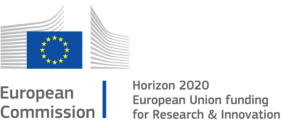
2018
El proyecto SELECTOR (financiado como una acción de investigación e innovación H2020) se centra en el desarrollo de componentes pasivos innovadores para aumentar la cantidad de componentes pasivos calificados para el espacio de libre acceso; contribuyendo así a la política europea sobre “Alcanzar la no dependencia en ciertas tecnologías, que abrirá nuevos mercados a las industrias y aumentarán la competitividad general del sector espacial europeo”. SELECTOR tiene como objetivo desarrollar interruptores electromecánicos compatibles con tecnología de montaje superficial (SMT) para alta miniaturización del sector espacial. Estos dispositivos llamados "Relé electromecánico en miniatura" (MEMR), ya existen para aplicaciones industriales de microondas en tierra como equipos de prueba automáticos. SELECTOR ofrecerá MEMR como parte de la lista de piezas europeas preferidas (EPPL) de la cartera de ESA para que este componente pasivo de alto rendimiento y alta integración esté disponible sin restricciones para toda la industria europea. SELECTOR también demostrará un enfoque completamente nuevo de equipo de microondas auto-redundante llamado "Meta-equipo" basado en componentes MEMR y ensamblaje a nivel de placa SMT específico de microondas para minimizar costos y mejorar la integración. Este demostrador abordará las aplicaciones emergentes de los satélites de muy alto rendimiento (VHTS), donde el nuevo paradigma es la introducción de tecnologías digitales que se ocupan de un número muy alto de cadenas de RF. Se implementará una nueva evolución hacia la capacidad de alta potencia y alta frecuencia de RF para abrir un nuevo sector de aplicación dentro de los satélites espaciales (navegación, observación de la tierra), pero también en sectores no espaciales. En el marco de este proyecto, el grupo GAM participa directamente en la evaluación (teórica y práctica) de los nuevos componentes pasivos desarrollados en términos de aplicaciones espaciales de alta potencia y alta frecuencia. 

2020
Actualmente, los sistemas y aplicaciones de comunicación satélite europeos más relevantes soportan un gran número de servicios de la moderna Sociedad Digital. Entre ellos destacamos el sistema de navegación global GALILEO, programas meteorológicos y de observación de la Tierra como COPERNICUS, nano-satélites para misiones científicas y grandes constelaciones de pequeños satélites para implementar el próximo "Internet por Satélite", así como grandes satélites de telecomunicaciones en órbita geoestacionaria. Gracias a estas cargas útiles satelitales, muchas aplicaciones y una amplia variedad de sectores se están beneficiando a nivel mundial. Con el objetivo de mantener el crecimiento de estas aplicaciones, todos los programas satelitales citados están desarrollando sus evoluciones futuras: segunda generación de GALILEO, tercera y segunda generación de satélites meteorológicos (METEOSAT y METOP), próxima serie de misiones SENTINEL, próxima generación de pequeñas plataformas para las constelaciones Starlink y OneWeb, y nuevas grandes plataformas espaciales multihaz, que operan en los rangos de frecuencia de onda milimétrica y submilimétrica. Todos ellos necesitarán cargas de comunicación más avanzadas basadas en equipos novedosos (componentes pasivos y antenas) con requisitos más estrictos. El objetivo principal de este proyecto coordinado es abordar todos los desafíos identificados mediante el diseño de nuevos componentes pasivos y antenas para los sistemas de comunicación satelital de próxima generación. Para estos fines, los cuatro subproyectos trabajarán estrechamente en todas las tecnologías de alta frecuencia disponibles: es decir, desde las más clásicas, basadas en circuitos planos y guías de ondas, hasta las más recientes, que utilizan guías de ondas planas integradas con/sin sustrato dieléctrico y la prometedora GWG. También se investigarán materiales avanzados (bioplásticos, materiales artificiales, cristales líquidos y nitruro de galio y grafeno, para frecuencias de terahercios), así como técnicas de fabricación (fresado clásico, fabricación 3D, LTCC y procesos de micromecanizado).
Colaboran en este proyecto: Instituto de Telecomunicaciones y Aplicaciones Multimedia (ITEAM) de la Universidad Politécnica de Valencia (UPV), Dpto. de Tecnologías de la Información y las Comunicaciones de la Universidad Politécnica de Cartagena (UPCT), Dpto. de Física, Ingeniería de Sistemas y Teoría de la Señal de la Universidad de Alicante (UA) y el I.I.U. de Tecnologías, Construcción y Telecomunicaciones (ITCT) de las Universidad de Castilla la Mancha (UCM) 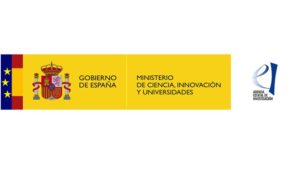
2019
Actualmente, los sistemas de comunicaciones espaciales (basados en redes de satélites) prestan un gran número de servicios a nuestra moderna Sociedad Digital (tales como la radiodifusión de TV, vídeo y datos con grandes anchos de banda, comunicaciones móviles, aplicaciones de radionavegación y de observación remota de la Tierra). Para ello, se ha hecho uso de cargas útiles embarcadas que operaban en las bandas bajas de microondas (entre 1 y 18 GHz), y desde 2006 se dispone de nuevos satélites de alto rendimiento (High Throughput Satellites, HTSs) cuyos servicios de comunicación se realizan principalmente en la banda Ka (20-30 GHz). Si bien todos estos satélites van a seguir empleándose, recientemente están surgiendo nuevas aplicaciones emergentes y de carácter inclusivo (relacionadas con aspectos de género, edad, etnia y situación socio-económica) de las comunicaciones espaciales (en las citadas bandas de frecuencia y en rangos mayores), cuyos desafíos tecnológicos deben ser atendidos. Para atender todas estas aplicaciones emergentes, los futuros satélites incorporarán nuevas y avanzadas cargas útiles de comunicaciones, cuyos equipos y subsistemas (componentes pasivos tales como filtros, con diversas respuestas y funciones, diplexores y multiplexores, así como antenas) van a precisar de soluciones tecnológicas específicas mejor adaptadas a cada escenario concreto. Así pues, este proyecto de I+D+i pretende ofrecer soluciones (mediante el diseño, implementación y validación experimental de demostradores tecnológicos concretos) a estos grandes desafíos en los nuevos equipos de alta frecuencia (componentes pasivos y antenas) de futuras aplicaciones espaciales.
Para ello, se consideran las tecnologías (más clásicas como la planar y las guías de onda, o más recientes como la híbrida guiada-planar SIW y sus novedosas realizaciones sin sustrato dieléctrico -ESIW y ESICL- o guías con paredes corrugadas -groove gap-), los materiales (dieléctricos, ferritas y cristal líquido) y las técnicas de fabricación (LTCC y fabricación aditiva) que resulten más adecuadas en cada aplicación.
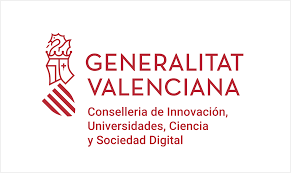
2021
El objetivo principal del proyecto InTEnSO es modificar sensores de fibra óptica con el fin de otorgarles mayor resistencia mecánica para su uso en condiciones de temperaturas muy altas y entornos que pueden ser agresivos. Dicho desarrollo debería ampliar grandemente el abanico de los usos posibles de los sensores de temperatura basados en fibras ópticas FBG y facilitar la democratización de dicha tecnología a nivel industrial.
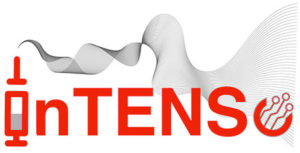 Para ampliar el rango de medida y la aplicabilidad industrial de los actuales sensores de fibra óptica, el proyecto InTenSO tiene por objetivo desarrollar un recubrimiento innovador que permite proporcionar una compatibilidad completa para trabajar en condiciones extremas, asegurando al mismo tiempo una resistencia química y mecánica mejorada y una flexibilidad adecuada, permitiendo también trabajar en entornos de altos niveles de intensidad de campos electromagnéticos.
El proyecto InTEnSO presentado conjuntamente por parte del Instituto de Tecnología Química (UPV/CSIC), liderado por el Pr Avelino Corma, y del Iteam (UPV), liderado por el Pr Salvador sales, ha recibido financiación de la Agencia Valenciana de Innovación (AVI) en el ámbito de su programa “Valorización y transferencia de resultados de investigación a las empresas” (ayuda INNVA1/2021/64).
Consulta la web del proyecto aquí.
Para ampliar el rango de medida y la aplicabilidad industrial de los actuales sensores de fibra óptica, el proyecto InTenSO tiene por objetivo desarrollar un recubrimiento innovador que permite proporcionar una compatibilidad completa para trabajar en condiciones extremas, asegurando al mismo tiempo una resistencia química y mecánica mejorada y una flexibilidad adecuada, permitiendo también trabajar en entornos de altos niveles de intensidad de campos electromagnéticos.
El proyecto InTEnSO presentado conjuntamente por parte del Instituto de Tecnología Química (UPV/CSIC), liderado por el Pr Avelino Corma, y del Iteam (UPV), liderado por el Pr Salvador sales, ha recibido financiación de la Agencia Valenciana de Innovación (AVI) en el ámbito de su programa “Valorización y transferencia de resultados de investigación a las empresas” (ayuda INNVA1/2021/64).
Consulta la web del proyecto aquí.

2020
2020-2021
This is a project to validate the capabilities of 5G technology in Valencia, Spain by testing 15 use cases that involve sectors of health, industry, energy, gaming, and tourism. Valencia 5G has a budget of 10,145,234 euros and involves Orange, Huawei, Arborea Intellbird, CFZ Cobots, Global Omnium Idrica, Etra Research, and Development, Red Eléctrica y de Telecomunicaciones Innovación y Tecnología and Robotnik. The project aims to contribute from three approaches: support the deployment of the first 5G networks in Spain; experiment with the network management techniques; and testing the main capabilities of the technology: ultra-reliable and low-latency communications; massive machine-to-machine communications; and extremely high speed and capacity mobile broadband. The MCG of the iTEAM will be involved in 5 out of 15 uses cases, being these: (1) Robotic Remote diagnostic. (2) Fleet management: Robotics Remote control of AGVs. (3) Robotics-Remote inspection and maintenance. (4) 5G Digital Contents. (5) Massive IoT for smart meters in supplies. The use case of robotic remote diagnostic for the skin cancer diagnostic using the 5G mobile communications network, consisting of a specialist will scan the patient remotely using robotic arms that have built-in biometric sensors that capture and process the information. On the other hand, the VLCCAMPUS-5G of the Universitat Politècnica de València, has been chosen as one of the testing scenarios.


2020-2021
AUDERE aims to design and develop an intelligent and innovative system for urban refuse collection y and last-mile delivery logistics. To fulfil this objective, a fleet of autonomous vehicles (autonomous mobile robots) are equipped with 5G connectivity to carry out last-mile delivery and urban waste container recovery tasks.
The AUDERE system will assess the technical, economic, social, and environmental viability in a range of use cases. Therefore, AUDERE will offer high-tech solutions to the growing forward and reverse logistics needs in our cities. Trials will be performed in two scenarios. The first one is the VLC-CAMPUS-5G of the Universitat Politècnica de València, which is equipped with the infrastructure of a private 5G mobile network that allows the validation of different use cases, such as logistics, automotive, industry, media, among others. In addition, among the main advantages of VLC-CAMPUS- 5G we can mention that it is a closed and controlled environment, which could be considered as a small city due to its infrastructure, commercial and sport places, banks, parks and where more than 20,000 people move daily. The second scenario is the La Pinada District, which is an eco-district, the first in Spain, that will integrate the principles of sustainable urban development, creating an attractive environment for family living, work, and enjoyment of nature. The results of this project will define new technological products that can be deployed in Smart Cities or Smart Quarters.

2019
2019-2020
The 5G-ROSE project worked towards the transmission of 5G broadcast services over SFN virtualized networks, using opensource software.
The project is very well aligned with the current trends in the world of 5G. On one side, the virtualisation of the 5G infrastructure, both core and RAN (Radio Access Network), allowing for different deployment architectures with maximum flexibility and scalability. On the other side, the adoption of so-called LTE-based 5G Terrestrial Broadcast mode, which is currently under standardization in 3GPP Release-16, and that will meet the requirements of broadcasters
for the distribution of media content in 5G.
5G-ROSE has made use of the virtualised IRIS testbed at Trinity College Dublin. The project has
used and contributed to the open source SDR LTE software suite srsLTE, offered by Software
Radio Systems. The 5G-ROSE project consisted of three clearly differentiated, but related,
broadcast experiments over a virtualised SDR (Software Defined Radio) access infrastructure.
The first experiment was the development and testing of the first virtualized Multimedia
Broadcast Multicast Service over Single Frequency Network (MBSFN) transmission. The second experiment dealt with the introduction of 5G physical layer Release (Rel)-16 specific components. The third part was about the combination of both unicast and broadcast transmissions by means of network slicing.
 This project has been funded by third Open Call for experiment of H2020 project Orchestration and Reconfiguration Control Architecture (ORCA)
This project has been funded by third Open Call for experiment of H2020 project Orchestration and Reconfiguration Control Architecture (ORCA)
2020
iNGENIOUS will exploit some of the most innovative and emerging technologies in line with the standardised trend, contributing to the Next-Generation IoT and proposing technical and business enablers to build a complete platform for supply chain management. iNGENIOUS embraces the 5G Infrastructure Association (5G IA) and Alliance for Internet of Things Innovation (AIOTI) vision for empowering smart manufacturing and smart mobility verticals. The iNGENIOUS network layer brings new smart 5G-based IoT functionalities, federated Multi-Access Edge Computing (MEC) nodes and smart orchestration, needed for enabling the projected real-time capable use cases of the supply chain. Security and data management are fully recognized as important features in the project. iNGENIOUS will create a holistic security architecture for next-generation IoT built on neuromorphic sensors with security governed by Artificial Intelligence (AI) algorithms and tilebased hardware architectures based on security by design and isolation by default. In the application layer, iNGENIOUS new AI mechanisms will allow more precise predictions than conventional systems. Project outcomes will be validated into 4 large-scale Proof of Concept demonstration, covering 1 factory, 2 ports, and 1 ship, encompassing 6 uses cases. iTEAM is the coordinator of the project, and the leader of the media use case.

 INGENIOUS has received funding from the European Union’s Horizon 2020 research and innovation programme under grant agreement No 957216
INGENIOUS has received funding from the European Union’s Horizon 2020 research and innovation programme under grant agreement No 957216
ITN-5VC aims to investigate how multi-band multi-antenna communications, including mmWave, could be integrated together with radar heads and other wireless sensors into the same telematics unit, so that transmission chains and radiation systems were reused using the same spectrum in an opportunistic manner. This idea has important implications in the design of the vehicle and its communications that will also be addressed in the project.
With this premise, the project aims to investigate the future C-V2X systems based on 5G NR and how to integrate them with autonomous driving sensor systems.
 This project has received funding from the European Union’s Horizon 2020 research and innovation program under the Marie Skłodowska-Curie grant agreement No. 955629.
This project has received funding from the European Union’s Horizon 2020 research and innovation program under the Marie Skłodowska-Curie grant agreement No. 955629.
FUDGE-5G will make a leap forward in realizing the notion of cloud-native 5G private networks by developing a further enhanced ServiceBased Architecture (eSBA) for both control plane and user plane with “decomposed” players of the ecosystem divided into: New Radio (NR) access network infrastructure provider, eSBA platform provider, mobile 5G Core (5GC) provider, vertical application orchestration provider and vertical service provider. The forward-looking FUDGE-5G architecture will also feature “allEthernet” 5GLAN (Local Area Network), 5G-TSN (Time- Sensitive Networking), 5G-Multicast and intelligent vertical application orchestration features. The proposed framework enables highly customized cloud-native deployment of private 5G networks. FUDGE-5G will accelerate the (inevitable) shift to a fully software-based 5G core network by offering a disintegrated environment where components, both in control and user plane, can be deployed anywhere as micro-services (i.e., edge, on premises and cloud),being agnostic to the underlying infrastructure. This softwarization exposing 5G NR HW to third parties will enable the usage of off-the-shelf commodity HW to deliver additional cost savings, faster deployments and ultimately greater adoption for private networks. iTEAM is the coordinator of the project, and the leader of the media use case.

 This project has received funding from the European Union’s Horizon 2020 research and innovation programme under grant agreement No 957242.
This project has received funding from the European Union’s Horizon 2020 research and innovation programme under grant agreement No 957242.






 Para ampliar el rango de medida y la aplicabilidad industrial de los actuales sensores de fibra óptica, el proyecto InTenSO tiene por objetivo desarrollar un recubrimiento innovador que permite proporcionar una compatibilidad completa para trabajar en condiciones extremas, asegurando al mismo tiempo una resistencia química y mecánica mejorada y una flexibilidad adecuada, permitiendo también trabajar en entornos de altos niveles de intensidad de campos electromagnéticos.
El proyecto InTEnSO presentado conjuntamente por parte del Instituto de Tecnología Química (UPV/CSIC), liderado por el Pr Avelino Corma, y del Iteam (UPV), liderado por el Pr Salvador sales, ha recibido financiación de la Agencia Valenciana de Innovación (AVI) en el ámbito de su programa “Valorización y transferencia de resultados de investigación a las empresas” (ayuda INNVA1/2021/64).
Consulta la web del proyecto
Para ampliar el rango de medida y la aplicabilidad industrial de los actuales sensores de fibra óptica, el proyecto InTenSO tiene por objetivo desarrollar un recubrimiento innovador que permite proporcionar una compatibilidad completa para trabajar en condiciones extremas, asegurando al mismo tiempo una resistencia química y mecánica mejorada y una flexibilidad adecuada, permitiendo también trabajar en entornos de altos niveles de intensidad de campos electromagnéticos.
El proyecto InTEnSO presentado conjuntamente por parte del Instituto de Tecnología Química (UPV/CSIC), liderado por el Pr Avelino Corma, y del Iteam (UPV), liderado por el Pr Salvador sales, ha recibido financiación de la Agencia Valenciana de Innovación (AVI) en el ámbito de su programa “Valorización y transferencia de resultados de investigación a las empresas” (ayuda INNVA1/2021/64).
Consulta la web del proyecto 


 This project has been funded by third Open Call for experiment of H2020 project Orchestration and Reconfiguration Control Architecture (ORCA)
This project has been funded by third Open Call for experiment of H2020 project Orchestration and Reconfiguration Control Architecture (ORCA)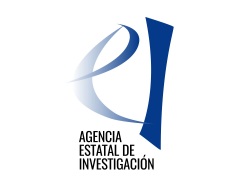

 INGENIOUS has received funding from the European Union’s Horizon 2020 research and innovation programme under grant agreement No 957216
INGENIOUS has received funding from the European Union’s Horizon 2020 research and innovation programme under grant agreement No 957216